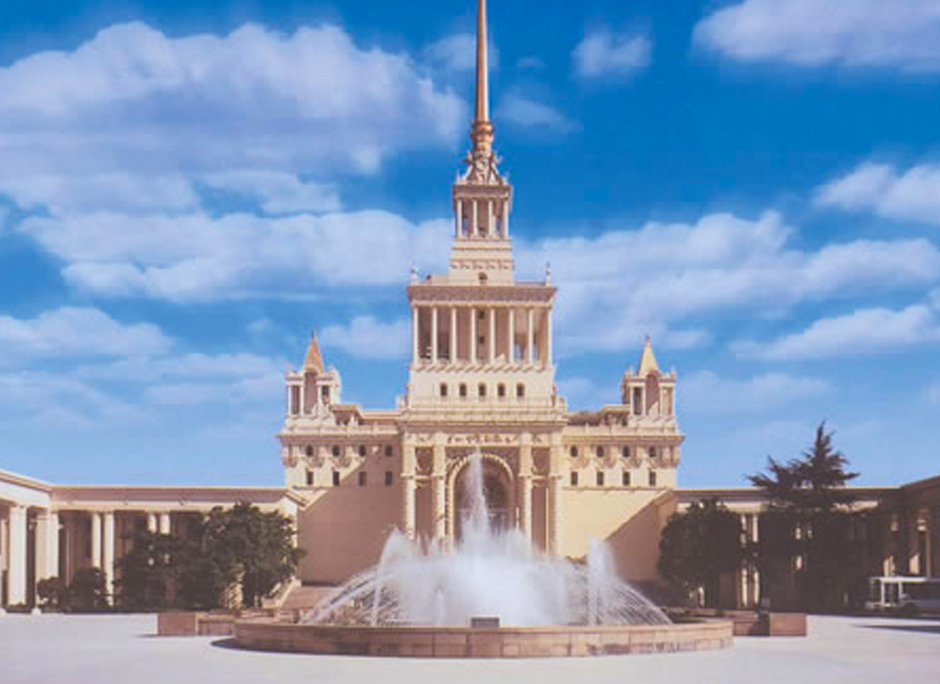Digital techs help transform Shanghai's north industrial base
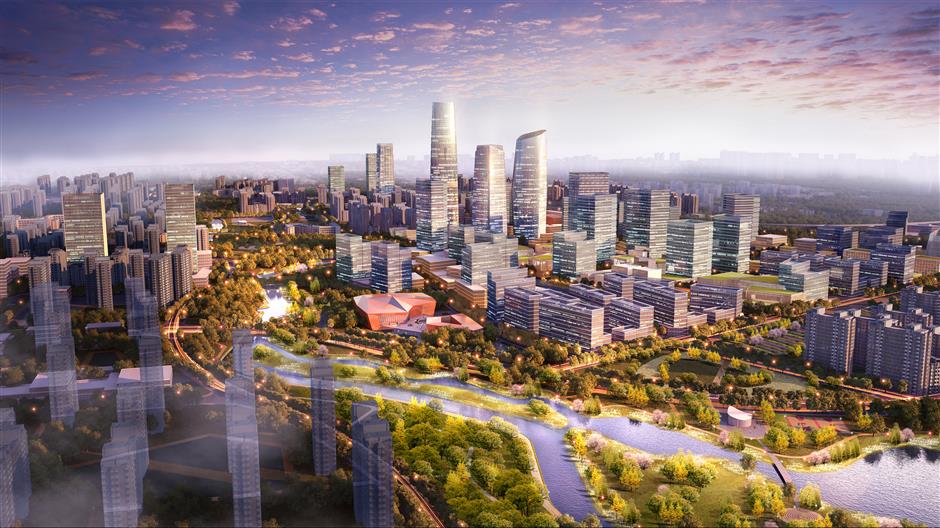
An artistic rendition of Nanda Digital City in Shanghai's suburban Baoshan District that will feature numerous smart applications.
New digital technologies are being widely used to help transform traditional industrial sites in Shanghai's north, as well as improve the environment and life of local residents.
A large swathe of smart applications has been installed at Nanda Digital City and Wusong Smart City, two key pilot projects in suburban Baoshan District, once the city's iron-steel and chemical industrial base with pollution problems.
A digital twin city model, one of the first in the city, has been completed for Nanda, which is rising from a former industrial site, notorious for soil and air pollution.
The digital model duplicates the infrastructure, buildings and underground pipeline and space of the region. It will become the foundation of a future digital city, featuring a smart urban management system.
Nanda, covering a total of 6.3 square kilometers, has finished its comprehensive pollution treatment campaign, including land remediation, the Baoshan government announced on Sunday.
Construction has also started on 14 urban infrastructure projects, including nine roads, two bus terminals, three greenery projects and three neighborhoods, marking the beginning of the grand transformation of the site.
Digital models of all these projects have been created and are involved in the digital twin of Nanda.
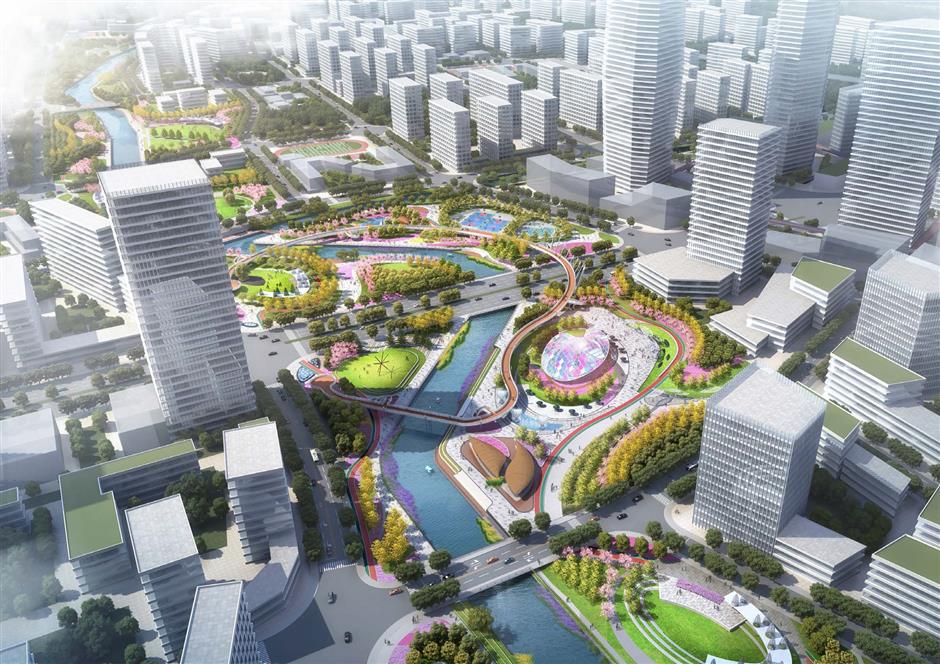
Another of the artistic renditions of Nanda Digital City in Baoshan.
Nanda was once the city's leather production and chemical engineering center with more than 200 companies and factories, but pollution and safety concerns meant the site was known as one of the city's most polluted.
Action against the problems began in 2009 and more than 50 companies were shut down. Most of the land has since been remediated.
It is part of Baoshan's efforts to widely promote the digital transformation of the district, which aims to become a key site to achieve Shanghai's ambition to become a scientific innovation center with global influence, according to the district's informatization commission.
Wusong Smart City, another key transformation project in Baoshan mainly based on the remnant factory buildings of Baosteel, is attracting digital and high-tech companies to offices renovated from the industrial heritage.
A super computing center, for instance, is being developed from a former thick steel plate workshop in the district's Luojing Town. The factory house, covering about 108,000 square meters, will be home to a number of super computers and servers of the Baosight software company.
The former stainless steel production line will become a digital technology experiencing center of the China Steel Museum. The heritage building, about 66 meters tall, will be a landmark for the museum to recall the former prosperity of the lucrative industry.
The China Baowu Steel Conference and Convention Center, which has been put into use for major conferences, was renovated from what was once the tallest iron-steel boiler in Shanghai.
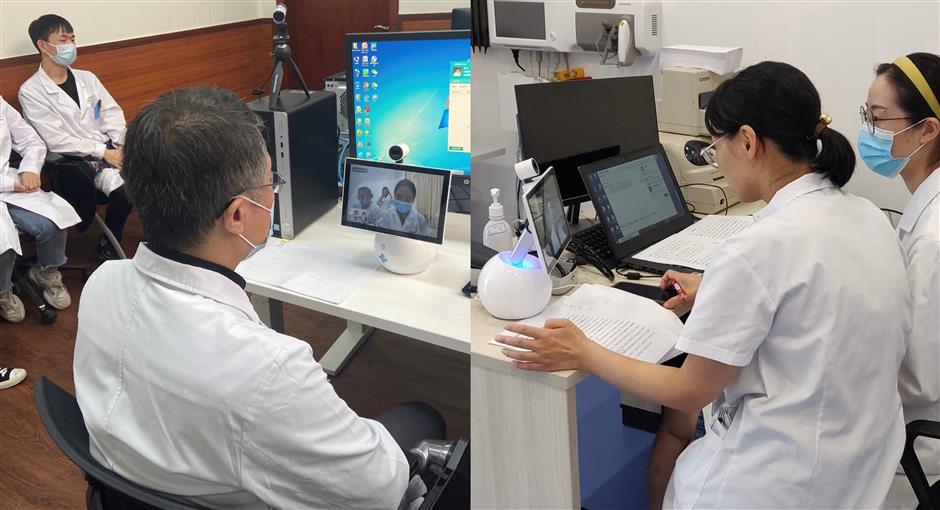
A remote medical service at Long Beach, or Changtan, a residential region along the Yangtze River
The Wusong area, known as the cradle of China's modern industry, was home to the renowned Baosteel Group and more than 300 other metal refineries and chemical engineering plants dating back to the 1930s.
Most of the factories have been shut or relocated due to pollution problems. Now the 26-square-kilometer site is to become smart city, a subcenter with new material and hardware industries, scientific and cultural innovation parks, commerce and business facilities, residential communities and waterfront attractions.
Meanwhile, some of the digital technologies are also being planted at Shanghai Long Beach, or Changtan, a newly developed upmarket residential area along the Yangtze River.
A Digital Changtan program has been initiated to mainly serve the young highly educated residents in the community, said Lin Bide, deputy director of the Youyi Road Subdistrict.
An unmanned medical service system, for instance, has been launched for residents to conduct physical checks, remote diagnosis with famous medical experts and get prescribed medicines, Lin said.
Other smart applications have been used for commercial hubs and farmlands in Baoshan. Luojing, one of the city's major agricultural bases, for instance, is using digital technologies to assist in the cultivation of hairy crabs from the Yangtze River.
Luojing crabs are known for their size, long legs, tighter meat and rich roe as well as a slight, naturally sweet flavor. They grow within the city's tap water source conservation area at the mouth of the Yangtze.
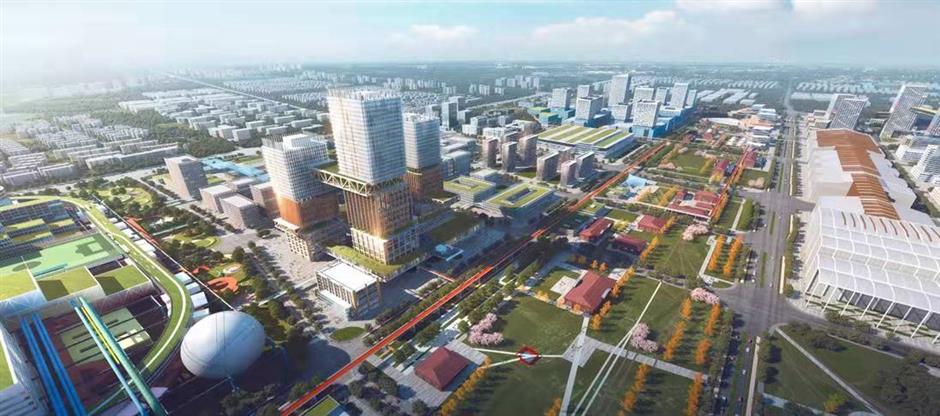
Wusong Smart City in Baoshan.
